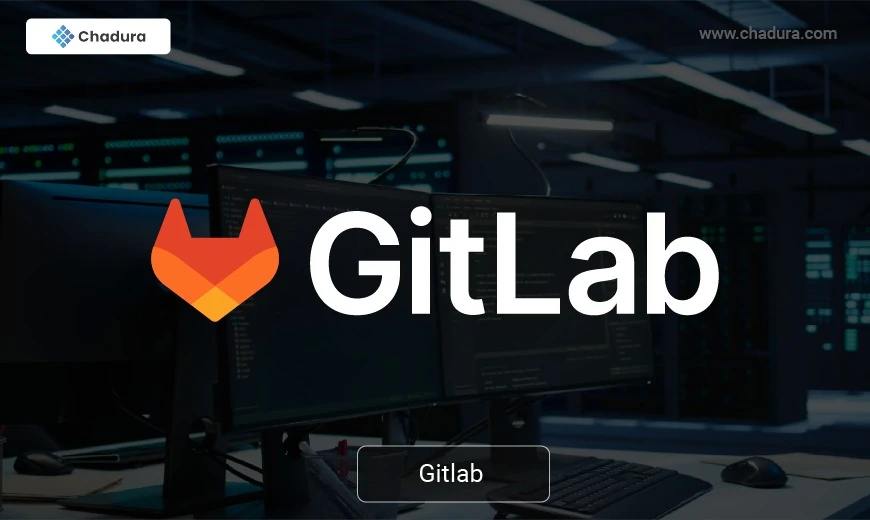What is Git-Lab?
Part - I | Part II
GitLab is a web-based version control system that provides free open and private repositories, issue tracking, and wikis. It is a complete DevOps platform that enables professionals to perform all the project activities—right from project planning and source code management to security and monitoring. It also enables teams to collaborate and develop better software.
GitLab helps businesses shorten product lifecycles and enhance the degree of productivity, thereby maximizing customers' value. The tool does not force users to create authorizations for each tool. If permissions are granted once, all individuals within the company can utilize all its facets.
You can use the premium version of GitLab if you prefer to have more features. The Premium, for example, will cost $19/user/month.
How Git-Lab operates?
GitLab's primary user feature is a graphical system for managing a Git repository, allowing users to browse, audit, merge, and perform other common operations which would otherwise involve the command line interface. A majority of the front-end user interface is Ruby on Rails powered behind a web server, which sends jobs to a backend assistant called Gitlab-Runner coded in Go through a jobs pool on a Redis server.
GitLab Shell is used to manage repositories, and PostgreSQL is used to store user, repository, wiki document, etc., metadata.
Why use GitLab?
GitLab applications offer the functionality of automating the complete DevOps process, including designing, creating, building, verifying, testing, deploying, and monitoring scalability, reputation, availability, and replication.
Its usage is increasing day by day. Due to its high-end features and building blocks of code. The code platforms that are reusable and can be executed are needed to be integrated. It consists of numerous CI/CD pipelines, a container registry, Kubernetes integration, and the optimal data portability. Integration of data and monitoring makes it more sustainable.
GitLab projects are public or private, and it is open-source to offer everybody free access. Its public repository can be used for wikis, issues, and documentation. It allows the team to work collaboratively and write Go and Ruby code. It is created to store data and a list of objects that have been committed with many references to them. It is a central point for developers and newcomers to develop, store, test, share, and work on all web projects.
Features of GitLab:
- Open-source community edition repository management platform.
- Easy Maintaining of a repository on a server.
- Offers features like Group Milestones, Time Tracking Issue Tracker, etc., for productive development.
- Additional Spontaneous User interface and authentication capabilities.
- User Permission and Branch protection are enhanced.
Limitations of GitLab:
Although GitLab has many advantages, it also has some disadvantages:
Performance Issues: GitLab is resource-hungry, particularly on self-hosted environments, and demands a lot of server resources to operate smoothly.
Complexity: Because of its large number of features, GitLab is daunting to new users, and the learning curve is steep.
Premium Feature Fees: Although the community edition is free, premium features like deep security scanning and compliance features are paid for through a subscription.
Slower UI Performance: Some users argue that the UI of GitLab is slower compared to its rivals, especially when handling large repositories.
Self-Hosting Maintenance Overhead: Organizations that self-host GitLab are responsible for handling updates, security patches, and backups, which contribute to operational overhead.
Alternatives for GitLab
- CloudBees Flow.
- Octopus Deploy.
- Continuous Delivery Automation (CDA).
- UrbanCode Deploy.
- Puppet Enterprise.
Key Features of GitLab
1. Source Code Management
GitLab offers Git-based repository management with essential features like branch protection, merge request approvals, and code review tools. It allows teams to collaborate efficiently while maintaining control over their codebase.
2. CI/CD Pipeline
One of GitLab’s standout features is its built-in CI/CD pipeline. With GitLab CI/CD, developers can automate testing, deployment, and monitoring of applications. The .gitlab-ci.yml file allows for defining custom pipelines to suit various project needs.
3. Security and Compliance
GitLab integrates security scanning directly into the development process. It supports static and dynamic application security testing (SAST/DAST), dependency scanning, and compliance frameworks to ensure code security.
4. Project Management
GitLab provides a range of project management tools, including issue tracking, Kanban boards, milestones, and time tracking. These features help teams manage projects efficiently without needing third-party tools.
5. Container Registry
GitLab comes with a built-in container registry that allows teams to store and manage Docker images securely. This is especially useful for teams deploying containerized applications.
6. Self-Hosted vs. Cloud
GitLab offers two deployment options:
- GitLab.com (SaaS): A cloud-based service managed by GitLab.
- Self-Managed GitLab: Organizations can host GitLab on their infrastructure for complete control and customization.
Github
GitHub is a cloud-based platform for version control and collaboration, primarily used by developers to store, share, and manage code. It is built around Git, a distributed version control system, and is widely used for open-source and private software development.
Difference between Git-lab and Git-hub
| S.No | Feature | GitLab | GitHub |
| 1 | Hosting | Self-hosted & Cloud (GitLab.com) | Cloud-based (GitHub.com) & Enterprise Self-hosted |
| 2 | CI/CD | Built-in CI/CD with free runner minutes | GitHub Actions for CI/CD (some limits on free tier) |
| 3 | Free Private Repos | Yes, unlimited | Yes, unlimited |
| 4 | Issue Tracking | Advanced issue tracking with boards, milestones | Basic issue tracking with projects & milestones |
| 5 | Merge Requests | Supports merge requests with approvals, pipelines | Supports pull requests with reviews, checks |
| 6 | DevOps Features | Full DevOps lifecycle (CI/CD, monitoring, security) | Focus on source control & CI/CD with integrations |
| 7 | Container Registry | Built-in container registry | GitHub Packages for container registry |
| 8 | Security & Compliance | Advanced security scanning, compliance frameworks | Security scanning & Dependabot alerts |
| 9 | Access Controls | Granular access control, role-based permissions | Repository-based access control, Teams, Orgs |
| 10 | Pricing | Free tier, paid plans for advanced features | Free tier, paid plans for enterprises |
| 11 | Popularity | Preferred by enterprises, DevOps teams | Most popular among open-source projects & developers |
| 12 | Ease of Use | More complex, but powerful | Simpler & user-friendly |
| 13 | Best For | DevOps teams, enterprises, self-hosting | Open-source projects, developers, teams |
Conclusion
GitLab is more than just a version control system—it’s a complete DevOps platform that empowers teams to build, test, and deploy software with confidence. Its integrated approach, robust features, and flexibility make it an ideal choice for modern software development.






Comments (0)